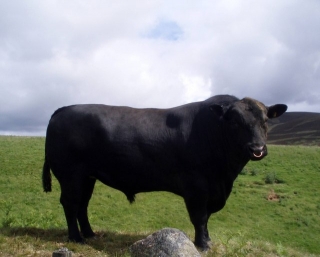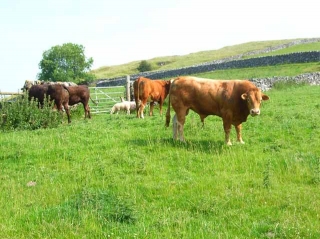
What is Trich (Trichomoniasis)?

Trichomoniasis is a veneral disease of cattle that is caused by a flagellated protozoan called Tritrichomonas foetis. It is
transmitted from infected bulls to cows and vice versa. This disease does not generally interfere with conception; however, embryonic death generally occurs within the first 2 months of infection followed by a 2-6 month immunity to reinfection in cows. Cows usually clear the infection within 95 days. However, infection of bulls is permanent, and there is no treatment. In fact, the bull is often the carrier of the disease throughout the herd.
Is the incidence of Trich increasing across the US?
In short, yes. Trich is no longer considered a disease of western states. Trich is a growing problem, but we are also finding it more because we are testing more. More and more producers are becoming educated about Trichomoniasis and are testing to prevent occurence in their herd. In fact, Missouri recently passed a law in September 2012 that requires eligible bulls moving intrastate to test negative for Trich prior to change in ownership or possession.
What are the signs of Trich?
Trichomoniasis is generally manifested as a high percentage of open cows. Cows are generally seen as returning to estrus or found to be open following the breeding season. Occasional pyometras and abortions can also be seen. Abortions generally occur in the first half of gestation at a rate of 5% to 30%.
Is my herd at risk?
Your herd could be considered at risk, if:
- Trichomoniasis has been diagnosed in your area.
- You have purchased mature bulls for breeding purposes.
- You use an extended breeding season (and thus are less likely to detect a fertility problem in your herd).
- Breeding bulls are purchased in your herd without knowledge of health status.
How can I prevent Trich from getting into my herd?
Prevention strategies for any given herd can be dependent on the operation and the level of risk. Producers should work directly with their veterinarian to implement the best prevention strategy for their herd. However, here are a few key ways to prevent Trich from entering your herd:
- Annually test all bulls and cull the bulls that test positive.
- Maintain proper fencing where neighboring herds could come into contact.
- Only buy bulls that have tested negative for trich or virgin bulls.
- Consider expanding or implementing an AI program to reduce the need for bulls.
- Do not allow newly purchased cows to be bred by your bull for at least 120 days (this allows any cows that could potentially be infected to clear the disease).
- When buying bred cows or heifers, purchase animals that are at least 120 days in gestation.
- For high risk herds or herds that have had problems in the past, consider vaccinating your cows. Studies have shown that vaccination doesn’t necessarily prevent infection with trich, but it can reduce calf losses associated with Trich.
Summary
In short, Trichomoniasis is a venereal disease that can wreak havoc on your herd and cause you to lose nearly half of your calf crop. Testing and and utilizing the prevention strategies above can prevent this horrible venereal disease from entering your herd. If you have questions or concerns regarding Trich prevention in your herd, please contact us.

References
1. Smith, Bradford P. Large Animal Internal Medicine. 4th ed. St. Louis, MO: Elsevier, 2009, pp. 1464-1465.
2. “Are You At Risk for Trich?” Beef. 9 Mar. 2012
http://beefmagazine.com/prevention-works/are-you-risk-trich-trichomoniasis-self-assessment
3. “Expanding the Cow Herd Can Bring in Problems” Beef. 25 Feb. 2013
http://beefmagazine.com/prevention-works/expanding-cow-herd-can-bring-problems
4. “Are You At Risk For Trich? A Trichomoniasis Self-Assessment.” Beef. 9 Mar. 2012
http://beefmagazine.com/prevention-works/are-you-risk-trich-trichomoniasis-self-assessment
5. “Trichomoniasis Is Spreading Across the US.” Beef. 1 Nov. 2011
http://beefmagazine.com/health/1101-trich-is-spreading
